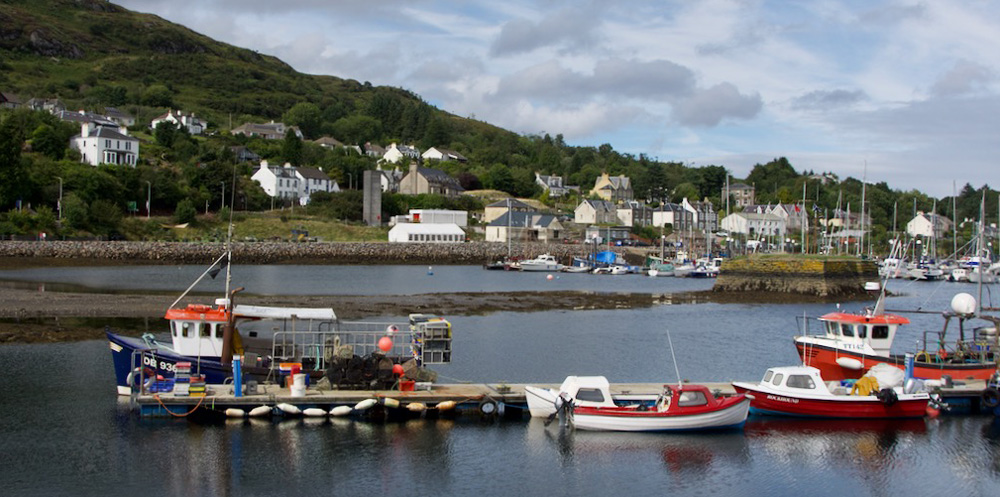
Tarbert – the ‘place of portage’
We took a little jaunt down to Tarbert the other day – a small harbour town, about 13 miles south of Lochgilphead. So pretty and peaceful! But this has been an important place in Scottish history.
In 1098 Magnus Barefoot, King of Norway, set out on one of his expeditions around the Scottish coast, and he wasn’t just sightseeing – he wanted land. Under an agreement known as the Treaty of Tarbert, Edgar, King of Scotland, offered Magnus all the islands off the west coast which were “separated by water navigable by a ship with its rudder set.”
Magnus also wanted Kintyre, which is technically a peninsula, but that wasn’t going to stop him. He ordered his men to haul a boat from shore to shore across the narrow neck of land at Tarbert, about a mile in distance, while he sat at the helm. Having proved it to be “navigable”, he lost no time in laying claim to Kintyre, which he thought was “better than the best island of the Sudreyjar [Southern Isles], Man excepted.” (Orkneyinga Saga).
As we looked down at Tarbert from the castle ramparts, I imagined Magnus being carried up the beach and overland, sitting proudly in command of his boat while his crew hauled in unison and maybe sang battle songs.
The name ‘Tarbert’ crops up in several other places across Scotland, in various spellings. The Gaelic ‘An Tairbeart‘ literally means ‘across-carrying’ or ‘portage’.
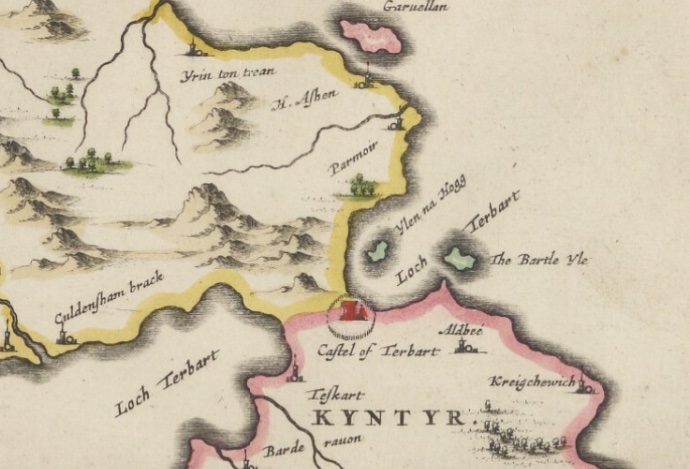
Tarbert shown on Blaeu’s Atlas of Scotland, 1654 (‘Knapdalia’ sheet), courtesy National Library of Scotland
Tarbert Castle
 On a rocky promontory above the town, the ruins of Tarbert Castle command sweeping views eastwards across Loch Fyne. According to Kilmartin Museum, “the first building of the castle we see today is likely to be work commissioned by Alexander II, just after his campaign against Ruaidhri mac Raonaill (great-grandson of Somerled and Lord of Kintyre) in 1221 and 1222.”
On a rocky promontory above the town, the ruins of Tarbert Castle command sweeping views eastwards across Loch Fyne. According to Kilmartin Museum, “the first building of the castle we see today is likely to be work commissioned by Alexander II, just after his campaign against Ruaidhri mac Raonaill (great-grandson of Somerled and Lord of Kintyre) in 1221 and 1222.”
It was strengthened by Robert the Bruce in the early 1300s, to defend it against the MacDonald Lords of the Isles, who eventually succeeded in re-capturing it. In 1494, James IV embarked on a determined campaign to squash the Lords of the Isles once and for all; he seized Tarbert Castle, built the tower, and installed a garrison here.
Thereafter it passed between MacAlisters, MacLeans and Campbells until it was abandoned in the late 18th century; stone from the ruins was used to build the harbour and houses in the town.
The Earra Gael gift shop has been a feature on Tarbert’s harbour ever since we’ve been coming here, and that’s quite a long time! It is a former weighbridge office, dating from the 19th century. Vehicles would drive onto the big metal weighing plate (just visible outside the door) to be weighed and then loaded from the harbour. Once fully loaded, the difference in weight would be calculated. I love the idea of a Viking crew using it to weigh their cargo of Magnus Barefoot, but of course that never happened!
Footnote: Magnus Barefoot (Magnus III of Norway) is also known variously as Barelegs, Barlag and Berrfott. It is said that he acquired this nickname through his preference for the tunic worn by the Gaels, which left the lower legs bare. He was also known as ‘Magnus the Strife-lover’.
Further reading:
Orkneyinga Saga
‘Magnus Barelegs’ Expeditions to the West‘ by Rosemary Power, The Scottish Historical Review (1986) via JSTOR
Kilmartin Museum – Tarbert Castle survey
Tarbert’s Royal Castle
The Castles of Scotland
Tarbert Harbour – British Listed Buildings
Earra Gael shop on Geograph.org
Photos © Jo Woolf

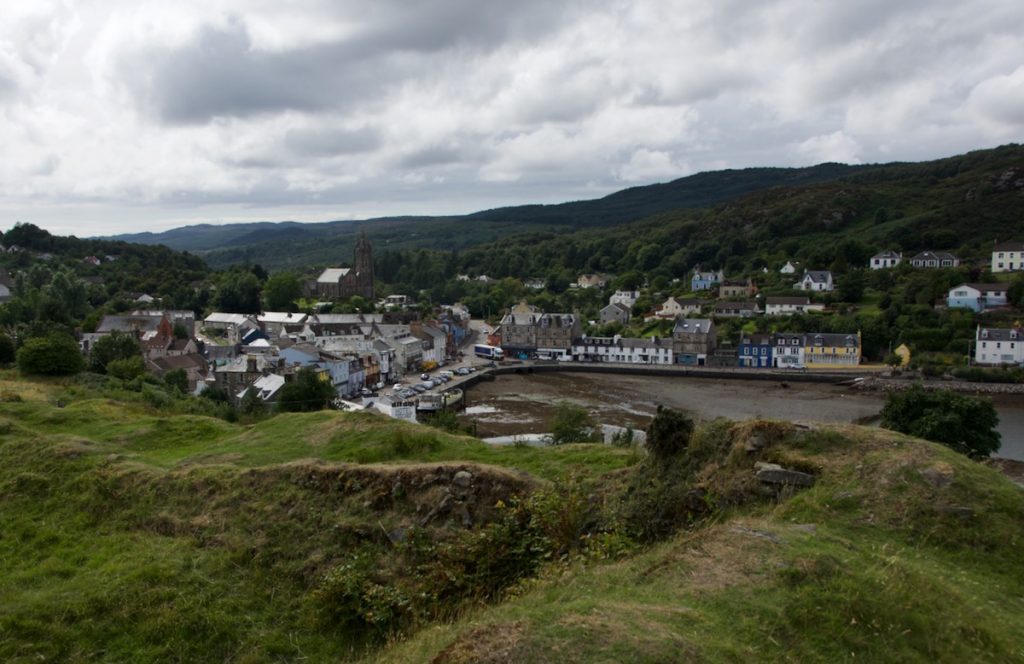
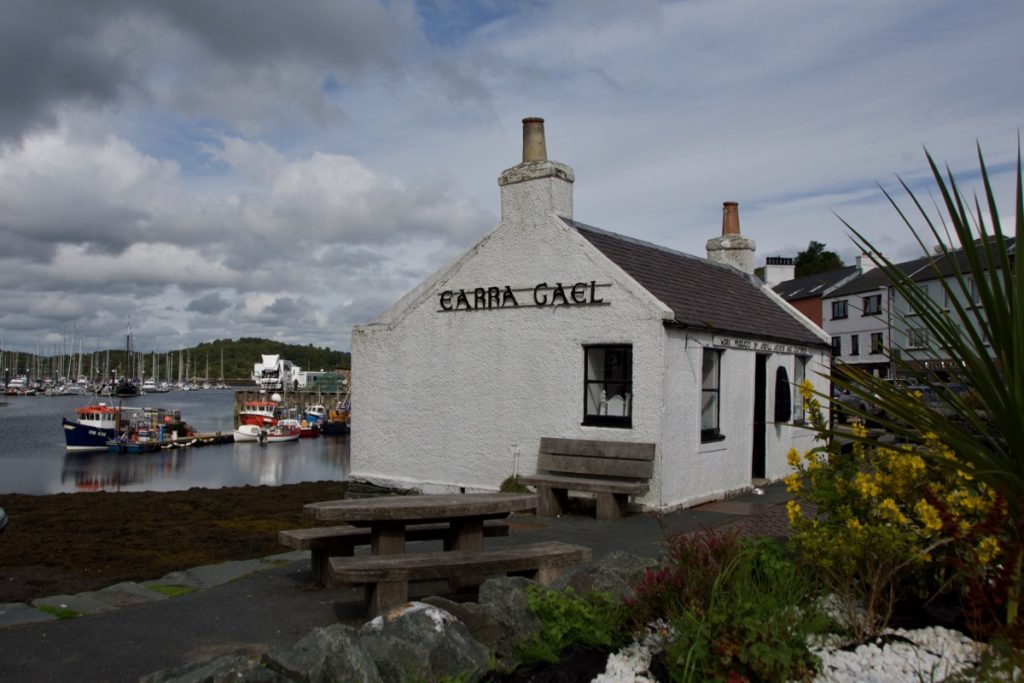
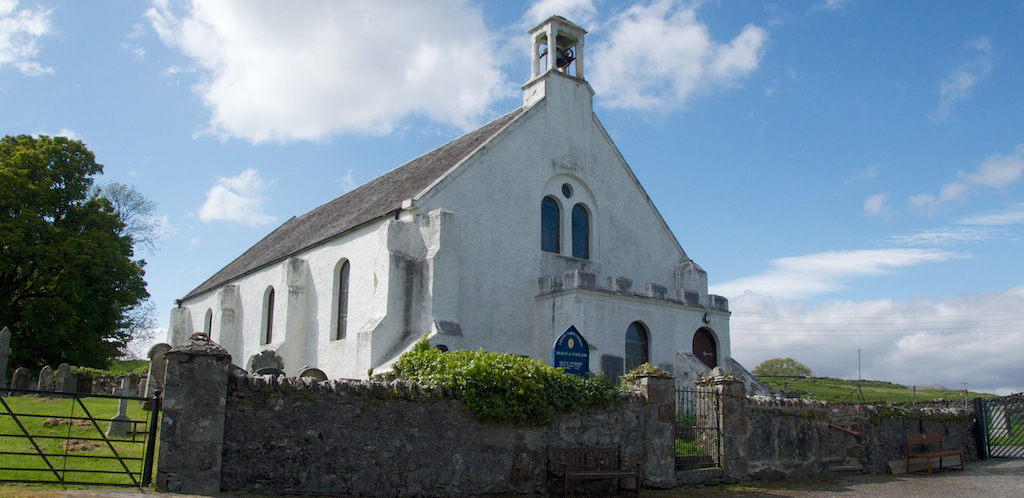

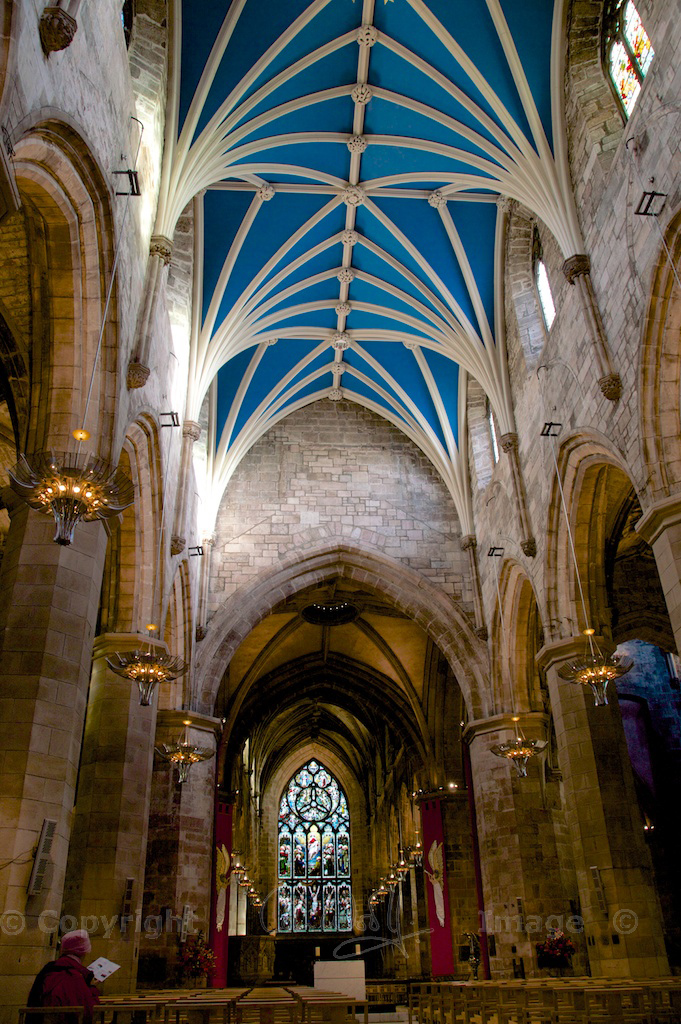
8 Comments
davidoakesimages
Rather like Tarbert (well this one in particular as there are several Tarbert’s as you know) but on the last visit 3 years ago felt that it was sad having lost a great deal of its bustle mainly like so many fishing ports suffering from there decline. This change in fortunes is the one big thing that would help so much of Scotland if the clocks could just be turned back. Even Oban, whilst still busy with the Ferry services and the new Marina is still so quiet compared to the days when the harbour was packed with fishing boats which of course were mainly local. But this Tarbert has the privilege of the Crinan Canal which in itself great to explore. Love the walk along the towpath to Crinan
Jo Woolf
I know, David – we can’t stop the change! But Tarbert has so much going for it, as you say. We love the Crinan Canal too, and there are some lovely places and beaches south of Tarbert – Skipness, for example, and I really want to get down to Saddell Abbey.
bitaboutbritain
We spent a memorable New Year at nearby Stonefield Castle, and should have made more time to explore. Fascinating article from you – as ever. Don’t you just love those old Norse and Danish names? Two of my personal favourites are Ivar the Boneless and Ragnar Hairybreeks (or something).
Jo Woolf
Thank you! That sounds a great way to spend New Year! I do love the old Norse names! I think they must have made them up specially so they sounded good in the sagas! Hadn’t heard of Ragnar Hairybreeks but obviously he cared very little about personal comfort!
Jim Rule
Magnus Barefoot sounds like he was a major role model for Donald Trumpus…
Jo Woolf
Haha, quite possibly, Jim! 😀
montucky
Very interesting story! Magnus would have been a fascinating man to know.
Jo Woolf
Yes, he would! It was a brutal time but there was still some kind of honour and it would be interesting to understand more about what motivated them. And their gods and mythology – that’s fascinating as well!